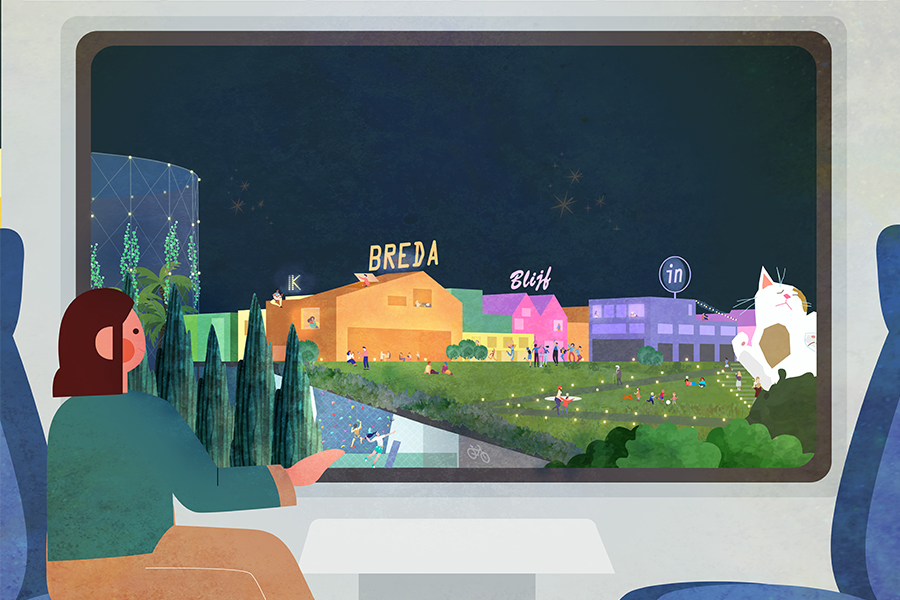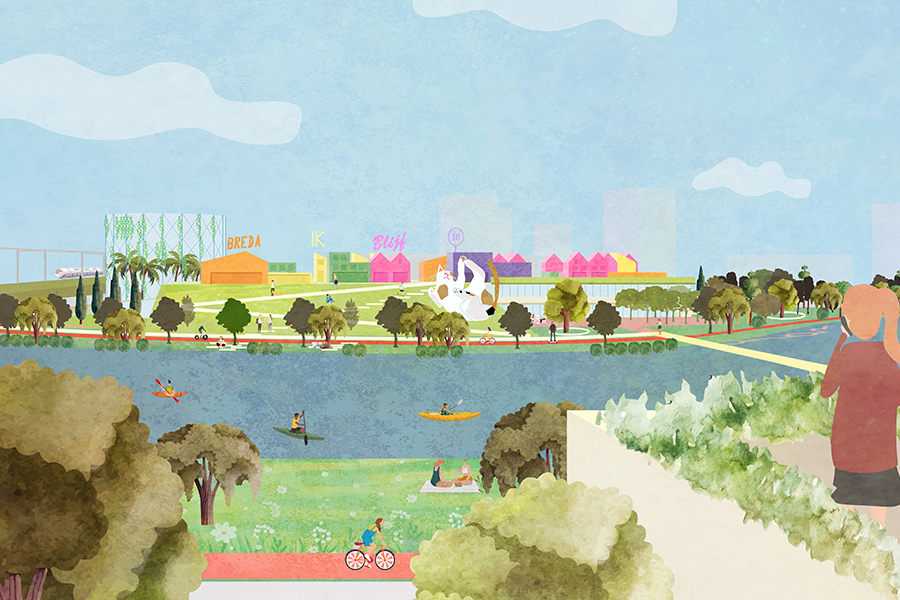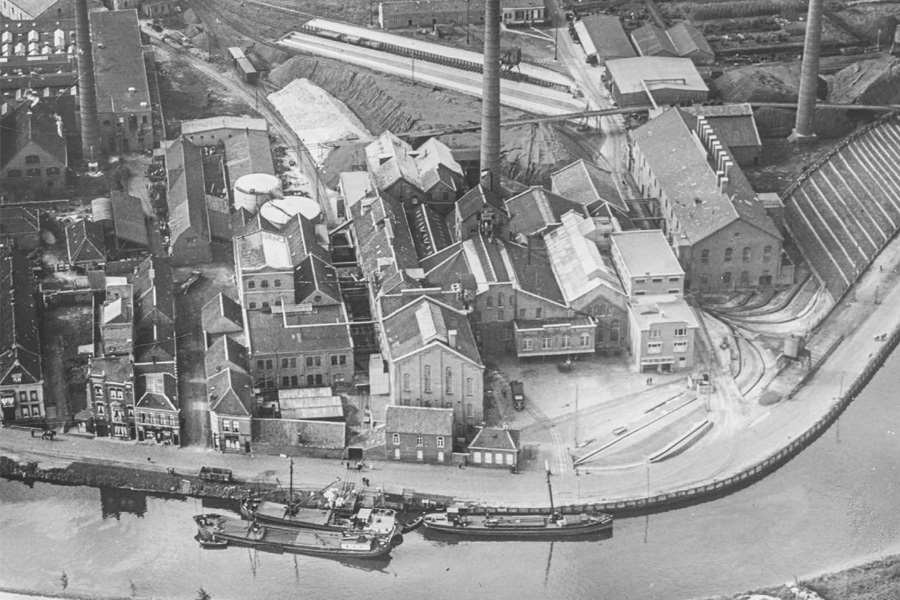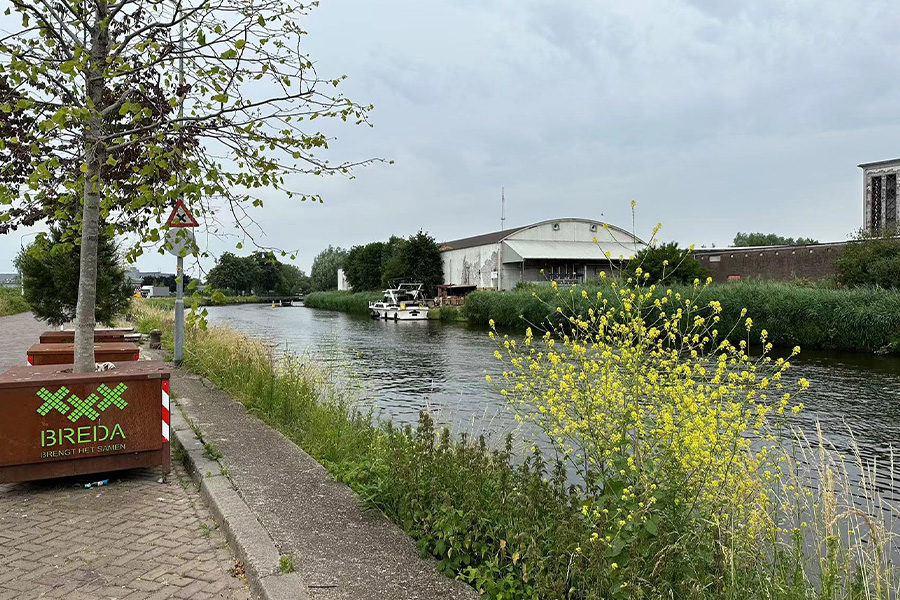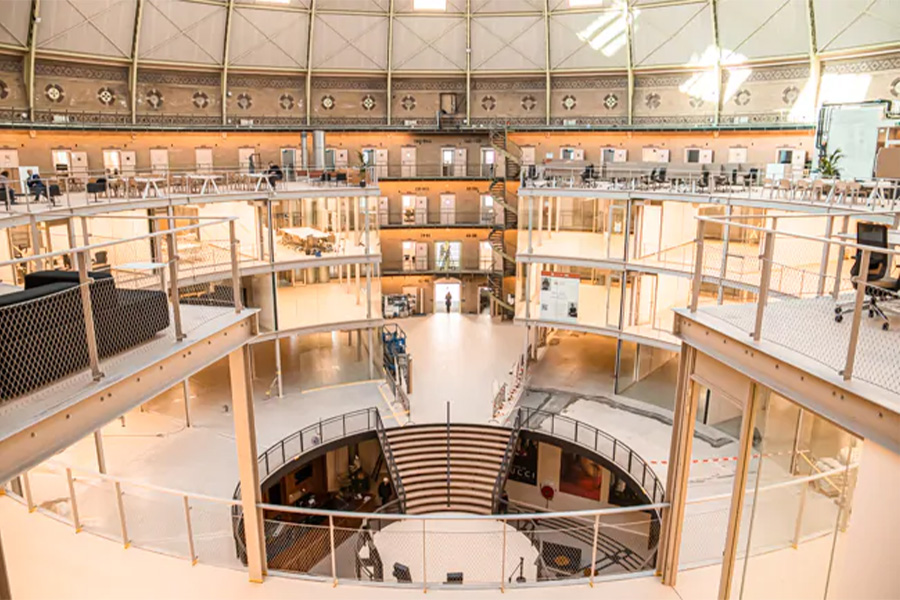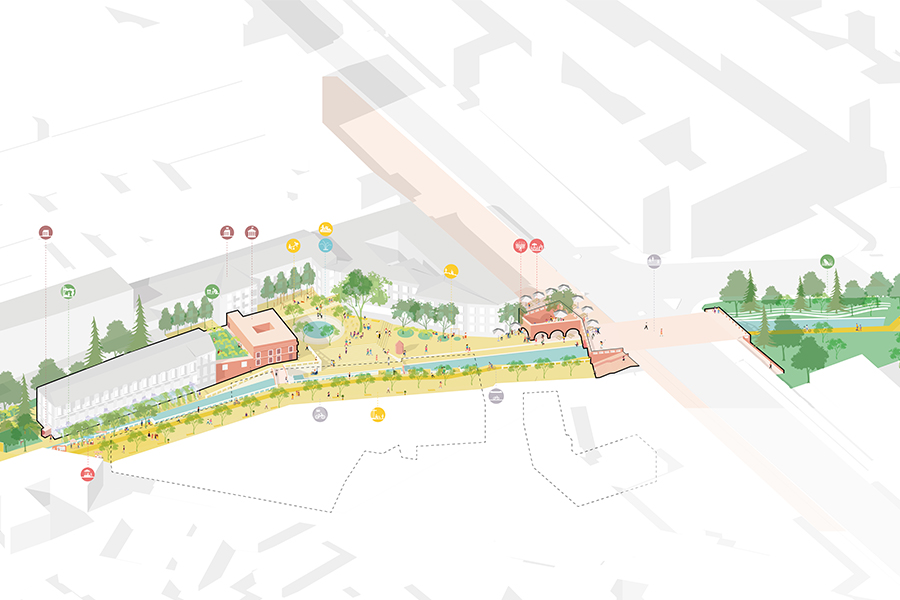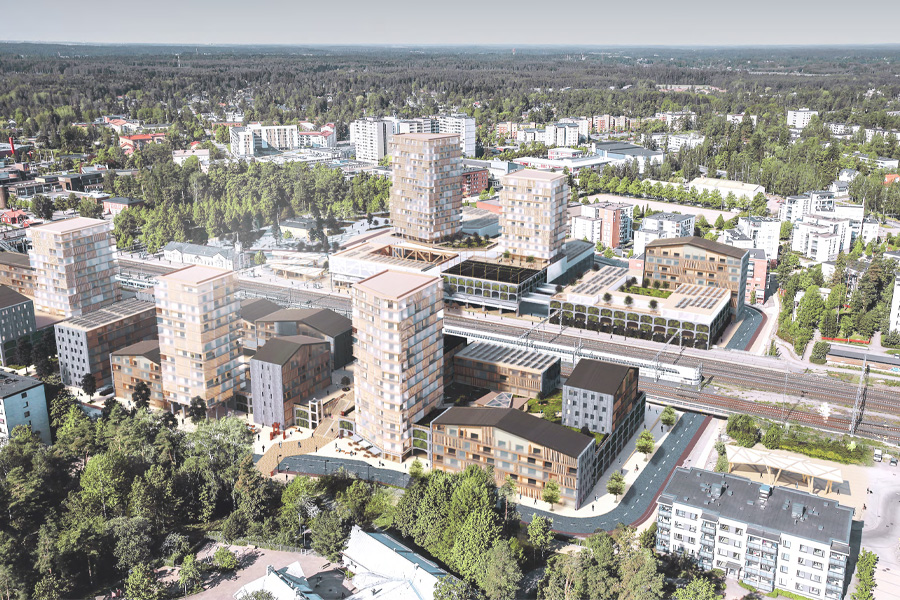Blij-da
'T Zoet (NL) - Mentionné

TEAM PORTRAIT
VIDEO (by the team)
INTERVIEW
Click on the images to enlarge
1. How do you define the main issue of your project in relation with the theme “Living Cities Imagining architecture taking care of the milieus”? And in which way do you think your project can contribute to an ecological and/or social evolution?
Living cities are never mono functional - It is the place for people to enjoy the richness of life. Rather than merely delineating the contours of daily routines, architecture and urban design should serve as catalysts, unlocking possibilities and kindling inspiration. In 'BLIJ-DA,' we propose an open and “undefined” built environment which fosters vibrant social interactions and ignites inspiration.
2. How did the issues of your design and the questions raised by the site mutation meet?
The site aims to be a cultural quarter and dynamic workspace in the new district of Breda, which links people, city, and environment. Our proposal includes a multi-functional public building with an open green space from water to roof, supporting dynamic daily work and life. Envisioned as open, green, inclusive, versatile, calm, relaxed, and enjoyable, it seamlessly connects diverse elements of urban living.
PROJECT:



We bring our experience in working-living environments at the level of strategies and master plans to a fresh trail, transitioning our expertise to a smaller scale. We draw inspiration from TU Delft library's versatile open roof, used for both study and leisure. Besides, Koepelgevangenis in Haarlem has also influenced our approach to blending diverse spaces and programs for innovative possibilities.
SITE:



Key players include developers, culture-art groups, and the municipality. The project adds identity and values to the district, while requiring investment from the surroundings. Culture-art groups make the place special, given its broader context in Van Gogh’s life traces. The municipality must preserve its public character, supporting young artists and startups beyond commercial interests.
REFERENCES:
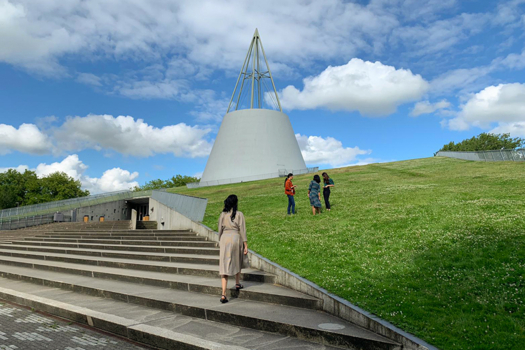

Our team is founded on friendship and a passion for urban landscape design. We know each other from the Master program at Urbanism. Shuangyun has a background in landscape, while You possesses a strong profile in urban planning and design.
6. How could this prize help you in your professional career?
Exploring unconventional ideas beyond our usual tasks is a refreshing departure. Encouraged by positive responses to our bold proposal, we're motivated to work further on projects where creativity holds meaning. Excited to collaborate and witness our ideas materialize into reality.
TEAM IDENTITY
Legal status:
Team name:
Average age of the associates: 28 years old.
Has your team, together or separately, already conceived or implemented some projects and/or won any competition? if so, which ones?
Having executed projects individually at design offices in the Netherlands, we collaborate for the first time in a competition. Before, we achieved separate successes with other teams. Shuangyun got the top prize in the Milan Navigli Canal Challenge (2022) with a strategic plan and design proposal, while You got the second prize in Kerava Station Area Competition, (2022) in Finland.
WORKS:


